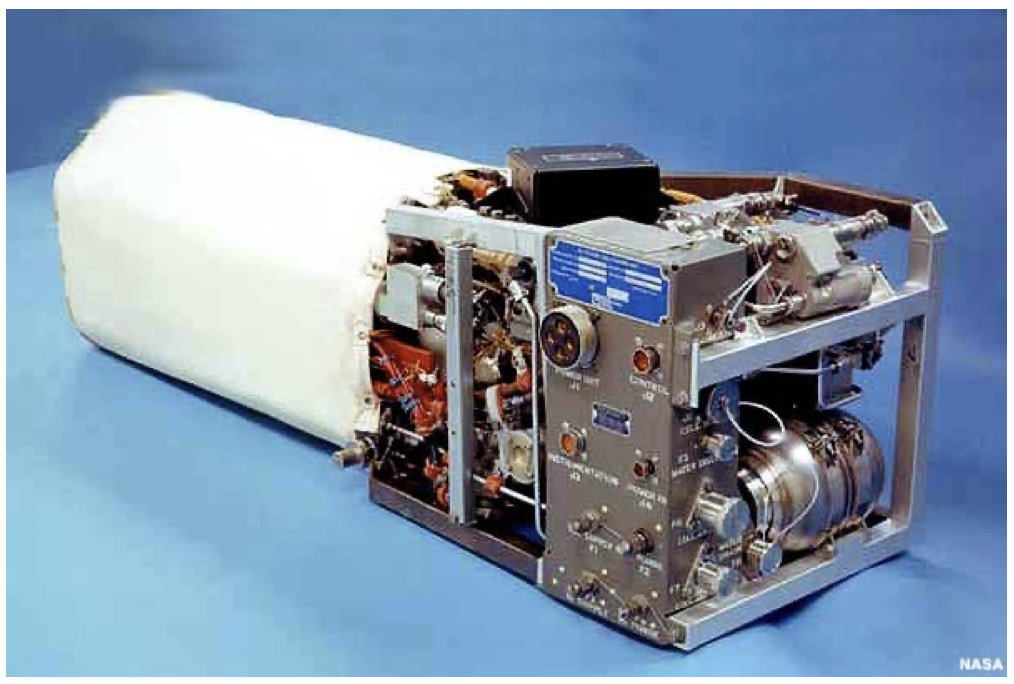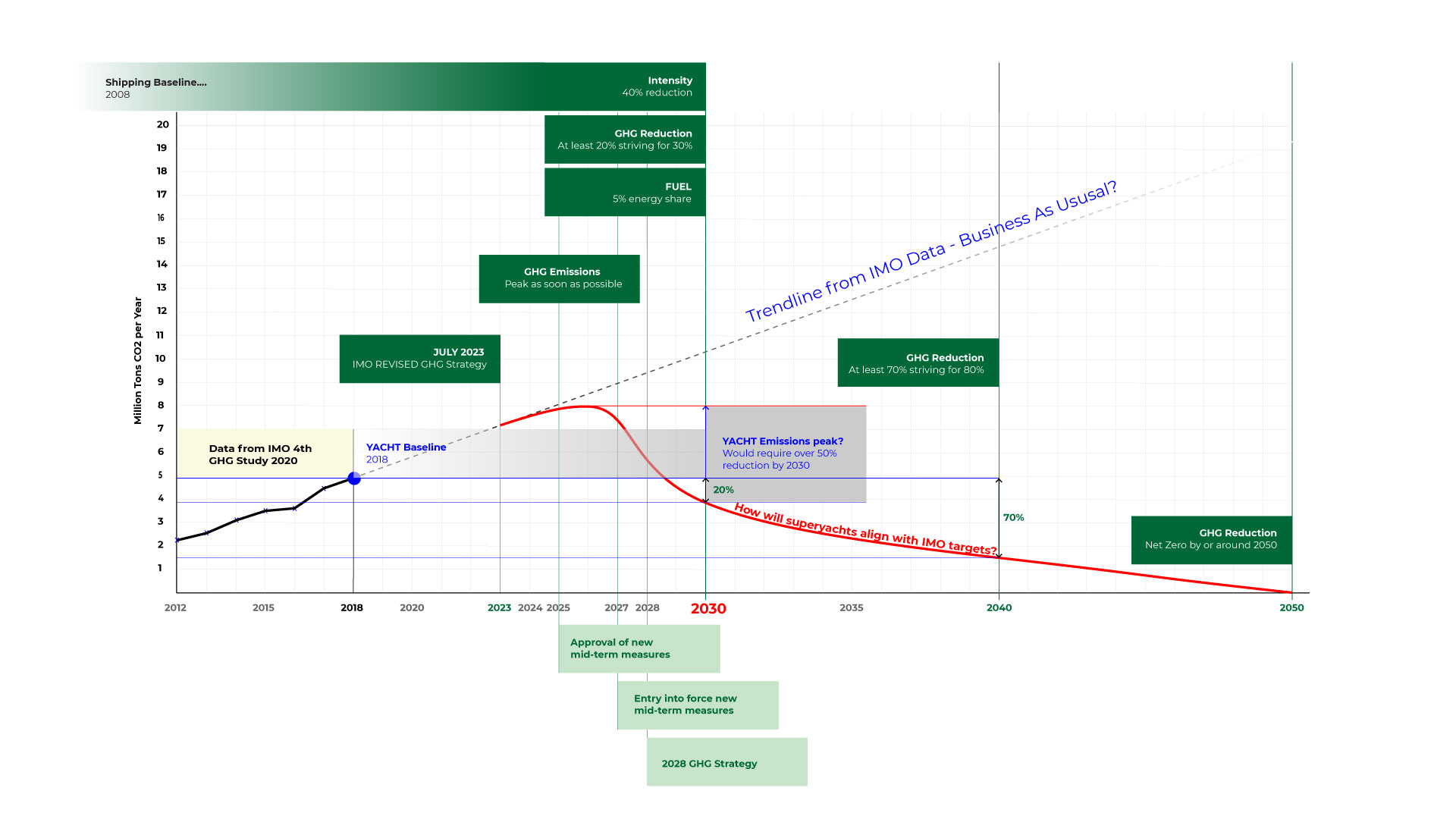The recent launch of Lurssens Project Cosmos, a 114m superyacht using reformed Methanol and Feadships recent announcement of a Liquid Hydrogen superyacht that both use Hydrogen in Fuel Cells as part of a hybrid solution, represent important step’s in yachting’s transition to a future less reliant on fossil fuels.
But what is a Fuel Cell, how does it work, and what are the benefits?
Some History
The first fuel cell Is generally attributed to Sir William Grove in 1842. He put platinum electrodes in containers of oxygen and hydrogen each immersed in a bath of sulfuric acid to form a single cell, then wired several cells in series to make what he called a “gas voltaic battery”.
It was not until almost a 100 years later in 1959 that Francis Thomas Bacon would demonstrate the “Bacon Cell” capable of producing 6 kW. Pratt and Whitney subsequently licensed the design to power the Apollo space vehicle and, later, with an improved version from UTC, in the Space Shuttle.
These were Alkaline Fuel Cells producing a max of 16kW, measured 0.35m x 0.38m x 1.14m and weighed 118 kg. The water produced was also used as drinking water and spacecraft cooling.
Since then, fuel cells have been used in a variety of applications including air independent submarines (AIP) such as Sweden’s Gotland Class, and the German Navy Type 212, first launched in 2005.
As highlighted, the technology has been around for some time, but it is only in the last decade or so that Fuel Cells have become a commercially viable solution.

@Nasa – Alkaline Fuel Cell
Current Day
Today there are a number of manufacturers of Fuel Cells that are being used in a variety of applications such as stationary power, buses, trains, as well as cars like the Toyota Mirai which was first introduced to the market in 2014.
We are now seeing this technology adopted by shipping, and the superyacht industry.
Some notable builds and projects: –
- Lurssen 100m+ superyacht project Cosmos. Superyacht News Article
- Feadship Liquid Hydrogen Fuel-Cell yacht LinkedIn Article
- San Lorenzo 50m superyacht Boat International Article
- Sea Change ferry – Operational Q2 this year. SW/TCH Maritime (switchmaritime.com)
- Torghatten Nord – 2 passenger ferries, each with 6MW fuel cells. World’s largest marine fuel cell systems – PowerCell Group Group Group Group
- Hydrogen One coastal towboat Methanol-electric towboat set for 2023 debut – Maritime Partners, LLC (maritimepartnersllc.com)
There are also a number of cruise ships that are operating trial systems.
How Does A Fuel Cell Work?
Sir William Groves definition is a good way to think of a fuel cell. It is very similar to a battery where an electrochemical reaction takes place between an Anode and a Cathode submerged in an electrolyte to produce electrical energy.
However, a battery can only store energy produced via an energy convertor (typically a diesel engine on a superyacht) and needs to be recharged. A Fuel cell is an energy convertor that produces electricity from a supply of fuel (Hydrogen and Oxygen). This same process is also used in reverse to produce Hydrogen from water.
Just like there are different batteries e.g. lead-acid, Li-ion, etc., that have different chemical and performance characteristics, so too do Fuel Cells. There are different types such as Alkaline, Solid Oxide, High Temperature, etc., but here I will focus on the Proton Exchange Membrane Fuel Cell (PEM-FC) that is most the mature and widely used in ship and yacht applications.
The diagram below shows the various parts of a fuel cell and the electrochemical process.
Hydrogen is supplied to the Anode and air/oxygen to the Cathode.
- At the Anode side the catalyst causes a reaction that produces protons (+ve) and electrons (-ve)
- The protons are conducted through the electrolyte membrane towards the Cathode side.
- The electrons flow to the Cathode via an external circuit producing electrical energy.
- At the Cathode side the catalyst causes a reaction that produces water (H2O)
A production Fuel Cell looks a little different.
Above is a Bipolar Plate (one side the Anode, the other side the Cathode) next to two Fuel Cell Stacks (Stack) from PowerCell Group.
A Cell comprises two Bipolar Plates that sandwich the gas diffusion layer, catalyst (Platinum) and electrolyte – as per the diagram.
Each Cell, when supplied with Hydrogen and Oxygen, produces a voltage of approx. 0.7 Volts.
Multiple Cell’s are joined together, Anode to Cathode to create the Stack – much like connecting batteries in series to increase Voltage.
As well as electrical energy, the electrochemical reaction creates heat, approx. 80C, and the only exhaust produced is water (approx. 0.5 m3 H2O/h at 200kW/h) and unused Oxygen. Any unused Hydrogen is re-circulated.
In theory the heat energy could be re-used and the water used as potable water once treated – it is essentially de-ionised water with some trace elements.
The Stack is relatively small, however there are quite a few ancillary parts required including pumps, supply and inlet lines, exhaust and re-circ., control and safety valves, flow control, power supply/management and ventilation.
A Complete Fuel Cell
The photo below shows a PowerCell Group Marine System 200, a 200 kWh Fuel Cell without the exterior cover, and an illustration of a finished unit for comparison.
Compact Power
As you can see it is quite a compact unit and the dimensions of the complete unit is 0.73m x 0.90m x 2.20m and weighs 1070 kg.
As a comparison, a CAT C9.3 185 ekW genset is h.1436mm x l.2170mm x w.1260 and weighs 2367 kg.
Without factoring in exhaust, ventilation and cooling, the Fuel Cell is less than half the weight, and requires approx. 1/5 of the floor area!
Feadship announces Liquid Hydrogen Fuel Cell Yacht
Each Fuel Cell can be connected to create Mega Watt power outputs as used in a number of the projects listed previously.
Cost and Maintenance
When it comes to cost, Fuel Cells are perhaps again like batteries?
In 2011 Li-ion batteries were approx. $900 kWh. With mass production, automation, and improvements in materials and technology, the cost has fallen dramatically to around $100 kWh in 2023 – the same happened with photovoltaic cells.
Today, a Fuel Cell may cost more than an equivalent genset however, as similar improvements are made, the price trajectory will likely follow a similar trend to Li-ion batteries in the coming years.
As there few moving parts in a Fuel Cell – most are plug and play – maintenance is minimum meaning less downtime and lower OPEX compared to a diesel engine.
The critical part is the Stack, and its life is expected to be approx. 30,000 hours at optimal load. During this time the electrical efficiency is >50%.
Beyond the expected hours the Stack still works, but efficiency degrades. And, although it is costly to replace, there are solutions, such as leasing, or long-term maintenance contracts, that will help mitigate this cost.
Benefits
Though there remain some challenges, including the availability and storage of Hydrogen and Methanol, systems integration and safety, Fuel Cells will become a real alternative to diesel engines, or as a part of hybrid solutions that allows extended, silent, and zero or net-zero CO2 emissions depending on fuel – unlike a battery charged by a diesel engine that only displaces the emissions by time and place, and have limited use due to capacity.
Summary of benefits:
- Green Hydrogen no CO2 emissions
- Reformed Green Methanol net-Zero CO2 emissions
- No Sox, Nox or particulates
- Near silent
- No vibration
- Modularity allows flexible layout
- Compact footprint – though additional space would be required if a reformer is used
- Low maintenance and minimum down time
- Parts, including Platinum, can be recycled
- Enhanced passenger comfort and onboard experience
- Unaffected by any local fossil fuel bans
The Future is Here!
The use of Fuel Cells is no longer limited to concept solutions and the vessels on order and in build are clear evidence that we have moved beyond theory into reality.
The technology has now reached a level of maturity and reliability where innovative owners and companies – forward thinkers keen to make a difference – are keen to invest at the early stages of a product adoption cycle.
In the next few years it will be interesting to see the increasing use of Fuel Cells, but also the reactions when other see how these yachts sail and, lay at anchor for days, without the noise, smell, vibration and emissions of a conventional superyacht!…











